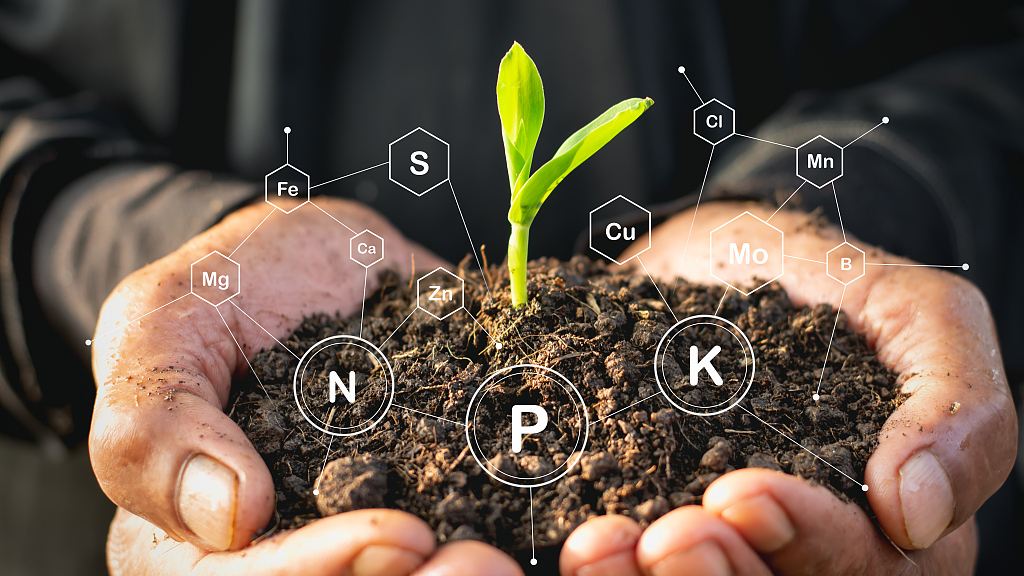
Originally Posted 19 Dec 2021
A type of biological humic acid, featuring high purity and high activity, extracted from agricultural and forestry waste has been industrialized and used for soil restoration in China.
A large amount of agricultural and forestry wastes are burned in the open air due to the lack of large-scale high-value utilization, resulting in environmental pollution and resource wastage. Humic acid is an internationally recognized green and effective environmental material for soil restoration that is in urgent need.
Industrialization of rapid pyrolysis of humic acid has stably served the bulk and high-value utilization of agricultural and forestry wastes since 2012, said Tian Yuanyu, professor at the College of Chemical Engineering of China University of Petroleum, according to Science and Technology Daily.
Humic acid is known as the source of life for the sustainable development of soil ecological environment, which can promote the growth of microorganisms in soil and improve crop yield.
Based on the humic acid, the research team led by Tian has developed a remediation agent of heavy metal contaminated soil, saline-alkali soil conditioner, and degradable humic acid mulching films.
The humic acid products have reportedly restored about 666,667 hectares of soil across the country over the past three years.
SOURCE: Xinhua, 18 Dec 2021.
Professor Tian Yuanyu honored with State Technological Innovation Award
Professor Tian Yuanyu and his research team were awarded the State Technological Innovation Award for the achievement of “The Creation and applications of humic acid environmental materials by rapid pyrolysis of typical agricultural and forest residues”. The 2020 State Science and Technology Award have been awarded to 264 projects, 10 experts, and 1 international organization.
Based on their research, the team devloped a series of targeted remedy materials could then be produced through the controlled cross-linking of biomass-derived humic acid and realized the sustainable remedy of degenerated soils. The pilot application of the targeted humic acid-based environmental materials has been carried out in more than 20 provinces and cities with remarkable social and environmental benefits.
Source: College of Chemical Engineering, China University of Petroleum, 2021-11-04. http://english.cce.upc.edu.cn/2021/1104/c17777a352581/page.htm
Understanding the role of humus in soil fertility
Humus is different from soil organic matter. “Humus” is a general term that describes a group of separate but distinct humic substances. “Soil organic matter” is carbon based material that is decomposing at various rates in the ground.
Some of the most common natural substances which are collectively refer to as “humus” include:
- Humic acid: a dark-brown humic substance that is soluble in water only at higher soil pH values and is of greater molecular weight than fulvic acid. Humic acid may remain for centuries in undisturbed soil.
- Humin: a black humic substance that is not soluble in water at any pH, has a high molecular weight, and is never found in base-extracted liquid humic acid products.
- Fulvic acid: a yellow to yellow-brown humic substance that is soluble in water under all pH conditions and is of low molecular weight.
Humic acids are extremely important as a medium for transporting nutrients from the soil to the plant because they can hold onto ionized nutrients (such as Nitrogen), preventing them from leaching away. Humic acids are also attracted to the depletion zone of the plant root. When they arrive at the roots, they bring along water and nutrients the plant needs.
The depletion zone is the area close to the root of a plant from which the root draws (depletes) nutrients. This zone can become particularly depleted if there is a lack of either humic acid or mycorrhizal fungi. When plants are mycorrhizal (i.e. grow in a natural symbiosis with these types of soil fungi), the depletion zone is of less importance. Mycorrhizae have hyphae micro-tubes that can extend much further into the soil than the host plant can reach. They can gather mineral nutrition for the benefit of the host plant from outside the depletion zone. However, if there aren’t healthy mycorrhizal relationships in the soil, humus is even more critical for plant nutrient availability and uptake .
Positive ions are more easily absorbed by a plant’s root because the root has a negative charge. In other words, the positive (cation) is attracted to negative (the living root). Humic acids hold cations (positive ions) in a way they can be more easily absorbed by a plant’s root, improving nutrient transfer to the plant’s circulation system. This works because humic acids (ulmic, humic, and fulvic) pick up positive ions and are then attracted to the root depletion zone and to the hyphae micro-tubes of mycorrhizae.
Since the root’s negative charge is greater than humic acid’s negative charge, the nutrients are taken up by the plant’s root and are absorbed by the plant’s circulation system. Some of the micronutrients are released from the humic acid molecule as they enter the root membrane, but the plant will also uptake some of the lighter molecular-weight humic acids as well. In essence, the humic substances are chelating such micronurient cations as magnesium (Mg2+), calcium (Ca2+), and iron (Fe2+). Through chelation, humic substances increase the availability of these nutrient cations to plants.
Source: Eco-farming Daily,
https://www.ecofarmingdaily.com/build-soil/humus/humic-acid/
Leave a Reply
You must be logged in to post a comment.